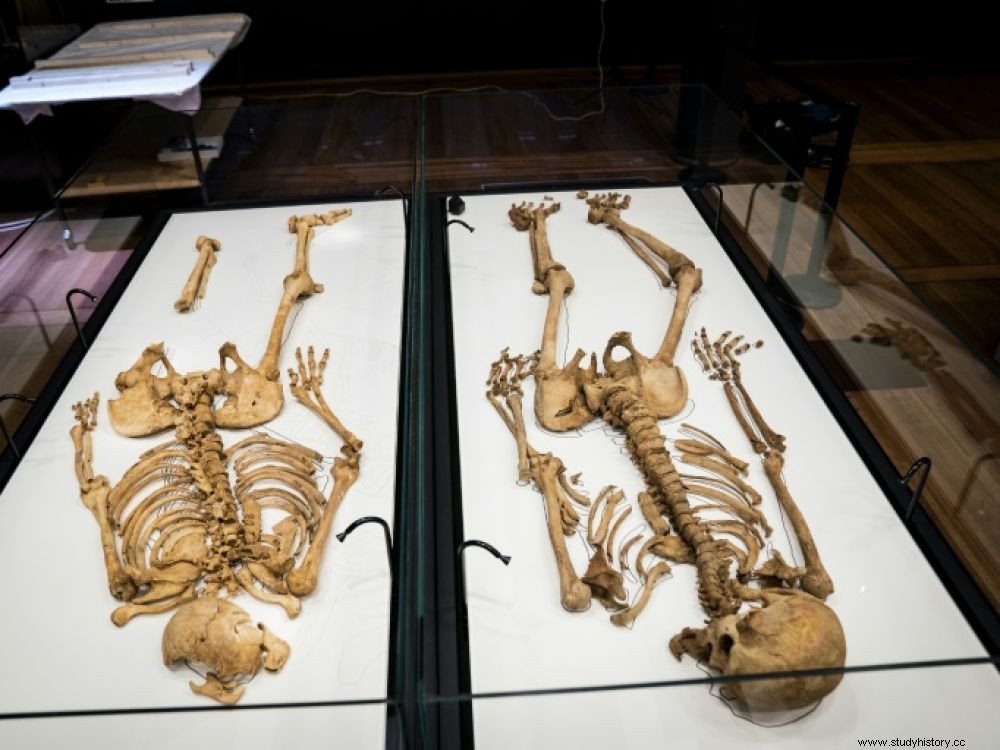In the early 11th century, one of the Viking warriors died in England from head wounds and was buried in a mass grave in Oxford. The other died in Denmark.

Two skeletons of Viking warriors at the National Museum of Denmark on June 9, 2021 in Copenhagen
Separated for 1,000 years, two Viking warriors from the same family were reunited on June 9, 2021 at the National Museum of Denmark in Copenhagen, an event that sheds new light on travel across Europe.
Second-degree relatives
In the early 11th century, one died in England from head wounds and was buried in a common grave in Oxford. The other died in Denmark, his skeleton showing signs of beatings suggesting he may have participated in battles. A DNA mapping of skeletons from the Viking Age (between the 8th and 11th centuries) fortuitously discovered that they were second-degree relatives. "It's a great discovery because now you can trace movements through space and time through a family ", explained to AFP the archaeologist Jeanette Varberg, of the national museum. For more than two hours, two of her colleagues reconstructed the skeleton of a man in his twenties, from some 150 bones on loan from the Oxfordshire Museum for three years.
An extremely rare discovery
The historical consensus on the matter is that the ancestors of the Danes invested Scotland and England. The young man "may have been shot in a Viking raid, but another theory is that he was the victim of a royal decree from King Aethelred II of England, who ordered in 1002 that all Danes in England be killed ", said Ms. Varberg. According to her, it is very rare to discover kinship links between different skeletons, especially when it is not about rulers.

Two skeletons of Viking warriors at the National Museum of Denmark on June 9, 2021 in Copenhagen. Credit:Ritzau Scanpix/AFP - Ida Marie Odgaard
If the kinship is indisputable, it is however impossible to determine the exact link between the two men. "It is very difficult to say if they lived at the same time or if there is perhaps a generation difference because there is no element in the tombs which can give a precise dating , so you have a margin of plus or minus 50 years ", explained the archaeologist.
